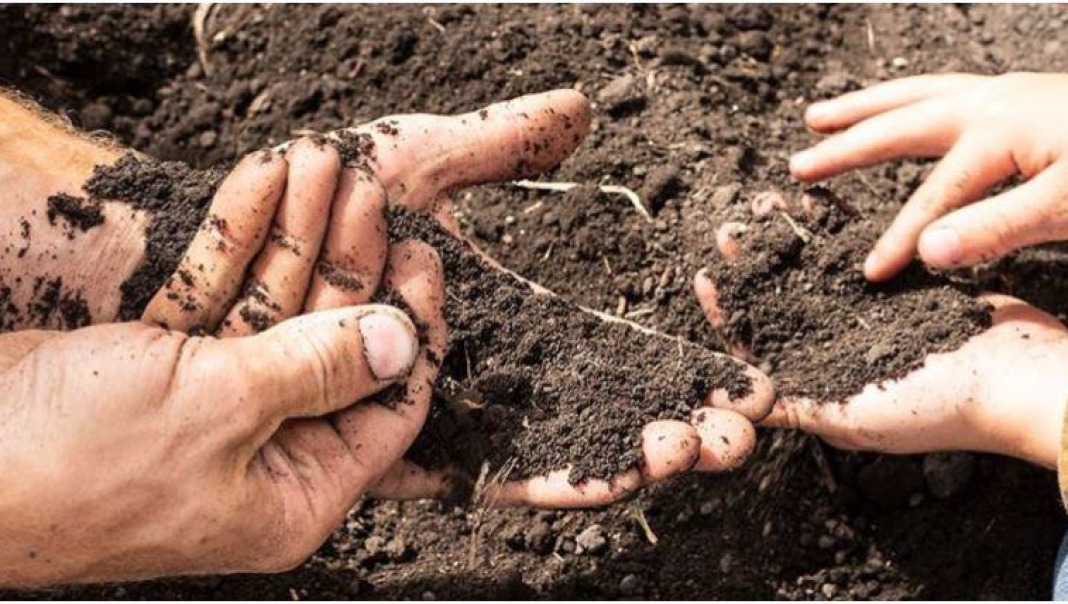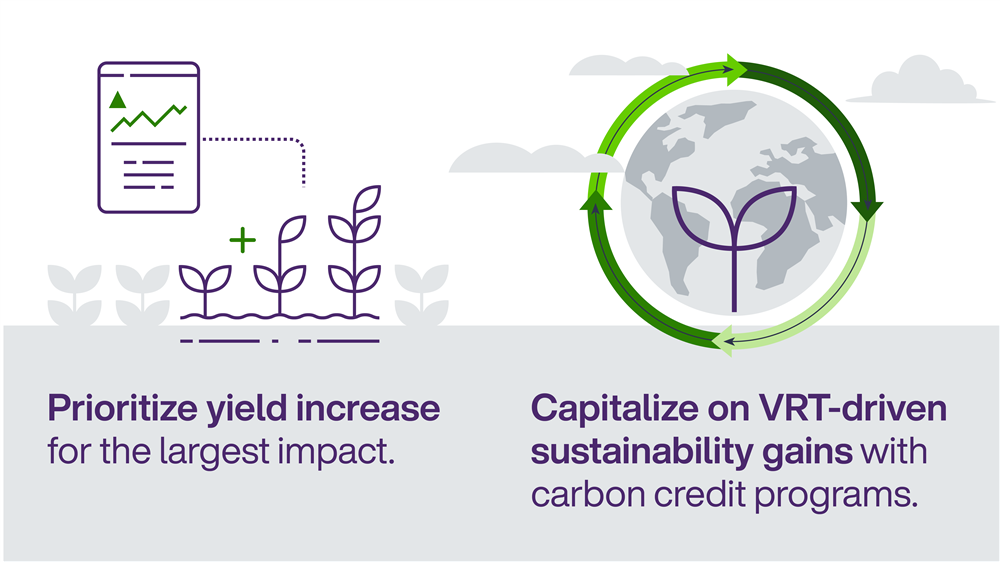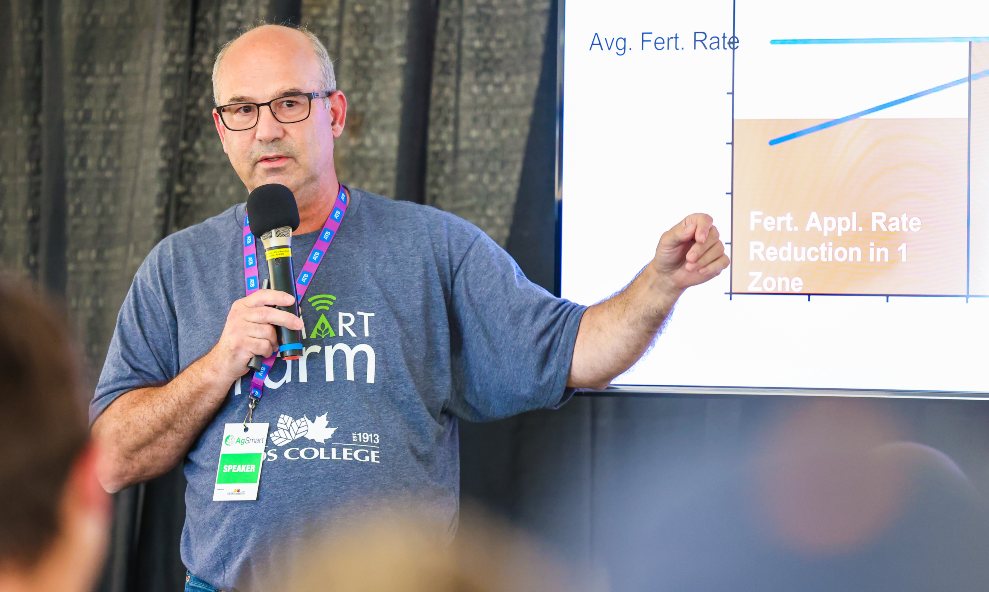Digging into the ROI of variable rate technology
Friday, January 27, 2023
Reference: Telus Agriculture

Variable rate technology holds promise for farmers to grow their productivity and sustainability. TELUS and Olds College are exploring its value to optimize fertilizer application.
________________________________________________________________________________________________
Across the 3,600-acre Smart Farm in Alberta, Canada, TELUS Agriculture & Consumer Goods and Olds College of Agriculture & Technology are evaluating the profitability of variable rate technology (VRT) for fertilizer application, which could help farmers save money and improve yields.
Herman Simons, Manager of Smart Ag Applied Research at the college, is leading ongoing research to better understand the economic return on investment (ROI) of VRT as part of a five-year strategic partnership with TELUS. The partnership aims to test and develop agtech to enable greater innovation and improved decision making, yields, efficiency and sustainability in food production.
Positive yield: validating the economic return for VRT fertilizer

The research ran a cost-benefit analysis based on a 10-year time period where VRT fertilizer rates were used on an individual 2,000-acre farm with a four-year crop rotation of canola, wheat, barley and peas. Different scenarios were explored that focused on increasing yield and optimizing fertilizer use and the related impact of reducing GHG emissions.
Early results suggest that VRT is beneficial to adopt in day-to-day farming operations, especially if producers can capitalize on the reduction in their environmental footprint by accessing carbon credit programs. The results also show that prioritizing yield increase from reallocating fertilizer can drive the biggest economic return, rather than focusing on savings from fertilizer optimization only (based on early 2022 fertilizer prices as compared to 2021).
Proving the economic viability of VRT for fertilizer application was an important project to explore for both TELUS and Olds College. Fertilizer can add up to a third of a farmer’s operating costs and prices have shot up in the last year due to supply chain issues and global conflicts. At the same time, the amount of arable land is decreasing globally, so increasing yields from the same acres while minimizing environmental impact and meeting food needs is vital.

Herman Simons presenting on VRT at the AgSmart event at Olds College in Olds, Alberta, Canada.
“We’re trying to help producers more easily quantify the value of VRT on their farm by expressing it in monetary value,” explains Simons. “This economic model will help determine what level of field variability is required to make investing in VRT worthwhile. For example, if producers can optimize 10 percent of fertilizer usage on a third of their acres without negatively impacting their yield, would it be worth investing in VRT? The range in variability of the fields subsequently impacting the financial return for VRT has led to a disconnect between the technology that’s already included on farming equipment and what farmers are using.”
“Precision agriculture technologies like VRT can, when implemented with preferred management practices, bring a range of benefits from a sustainability perspective including better environmental outcomes – GHG emission reduction and mitigation of risks to local air and water quality – whilst strengthening farmer livelihoods,” adds Kevin Ramm, Head of Sustainability at TELUS Agriculture & Consumer Goods.
“There are significant economic opportunities for farmers, depending on their geography and supply chains, to take part in programs that will reward more sustainable and regenerative farm management practices such as improved nitrogen management. It’s a potential win-win for farmers and the planet.”
Further exploring VRT’s potential
As part of the partnership, the team will continue to research VRT’s economic potential to help bridge the adoption gap, as well as how it could help optimize fertilizer use to improve environmental sustainability on farms. Further analysis is planned to improve the level of detail on field variability to make it more farm and field specific, validate the results across different crop types and other VRT such as seeding and crop protection applications and quantify the overall investment required to implement VRT on farms.“With any technology, it must help solve real world problems and deliver business value,” says Ramm. “VRT is an exciting opportunity where technology-enabled improvements can have a significant impact on agriculture and our world more broadly.”
What is VRT? VRT is part of a precision agriculture approach that enables farmers to get more exact in what and how much they apply to their crops. VRT defines a field into different zones where variable rates of applications are used. Where farmers once sprayed an entire field with a flat rate of fertilizer, seed, water or inputs, they can now make more informed and targeted decisions backed by artificial intelligence, Internet of Things (IoT), predictive analytics and data from field maps, sensors, soil sampling and historical crop performance. This can ultimately help farmers cut costs and the use of inputs and natural resources, while increasing productivity, profits and sustainability.
See how we can help you get the most from every field, acre and zone with our VRT and soil sampling solutions. Also learn more about our VRT economic research on the Smart Farm.
View article
Sign up to stay connected
- News
- Property Alerts
- Save your favourite properties
- And more!
Joining Farm Marketer is free, easy and you can opt out at any time.
